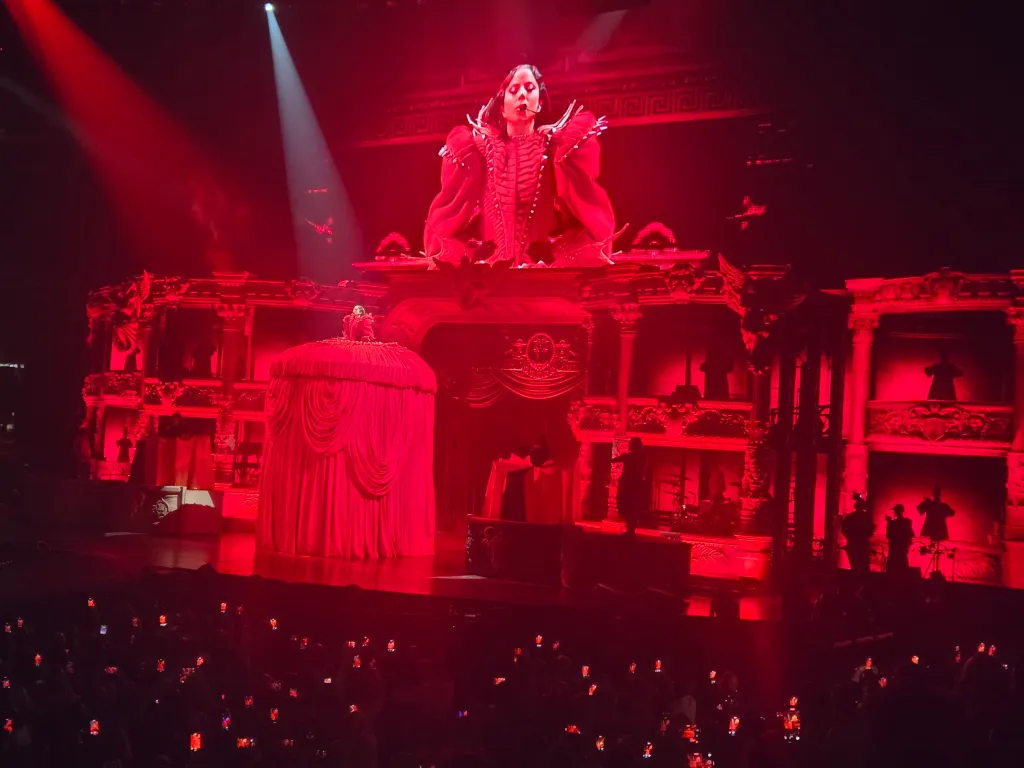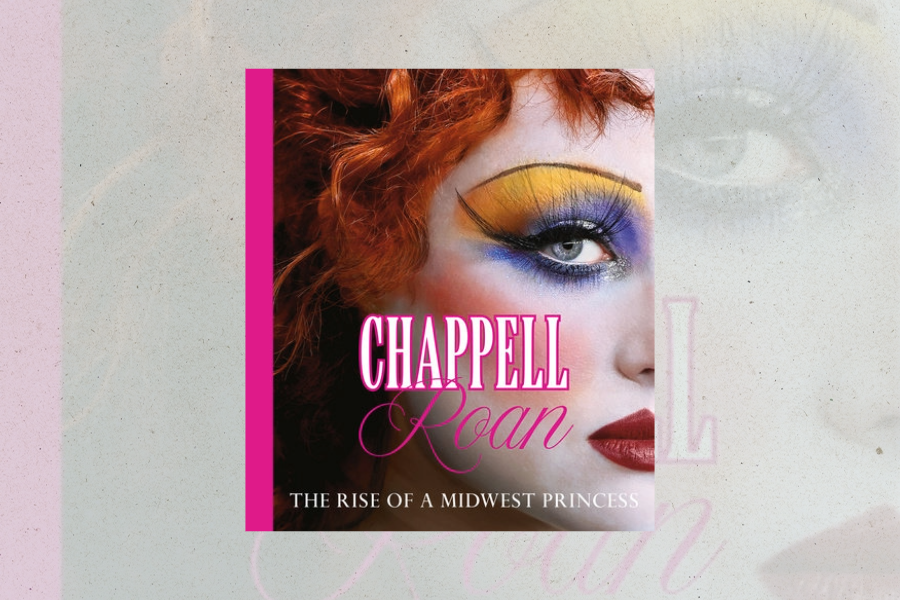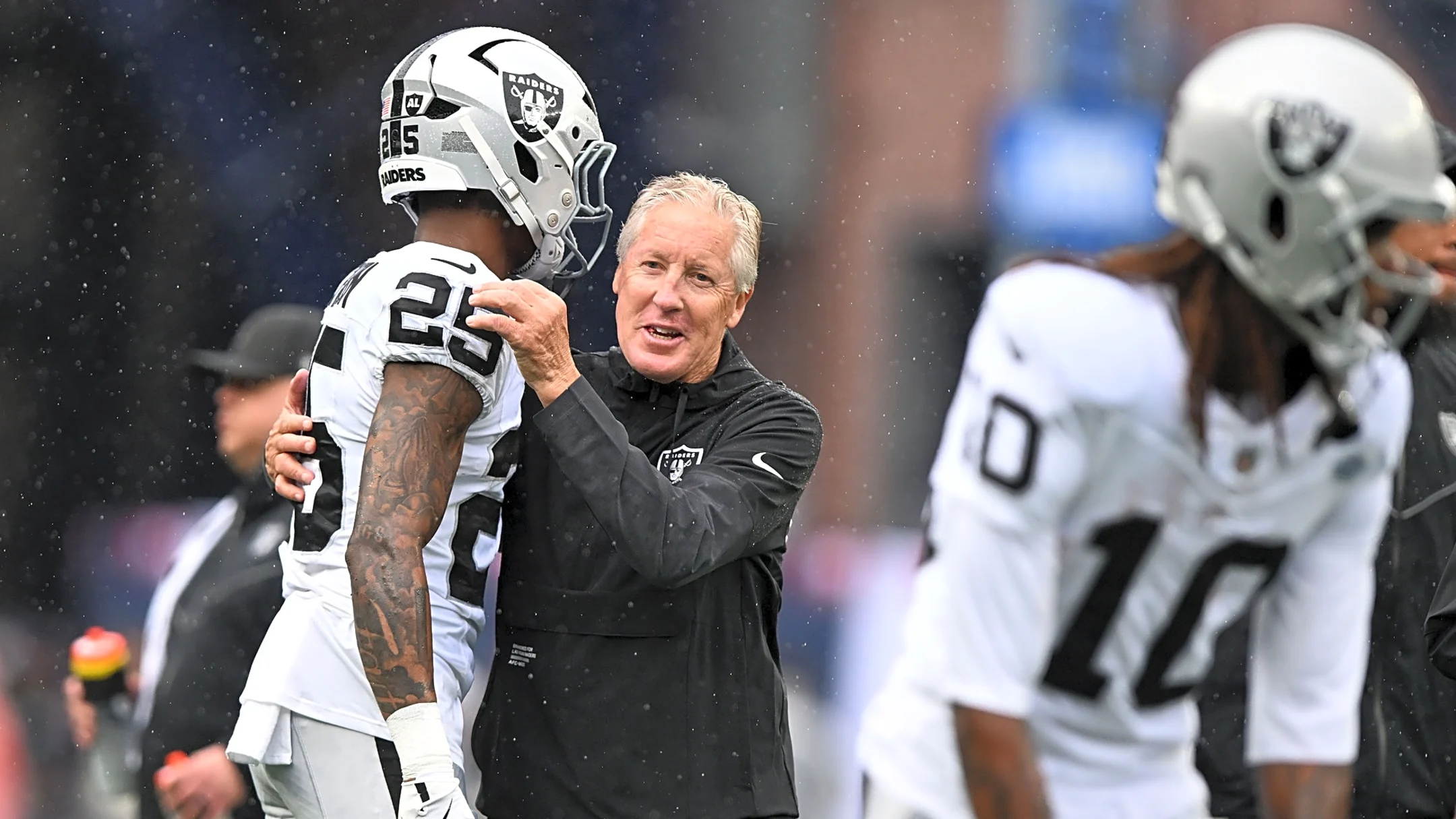
Monsters never die. Hear them growl.
That’s the most obvious takeaway from Lady Gaga’s “Mayhem Ball” tour, an all-out spectacular that threatened to break free of the United Center Monday at the first of a sold-out, three-night stand. Expanding her propensity for grandness to extreme proportions, the singer pushed the limits of possibility and created a flood of sensory impulses.
Built around four acts and a finale, Gaga’s brilliant extravaganza spun narratives that pitted her against an alter-ego twin of herself amid scenes that dazzled with color and choreography. The Gaga who ultimately won the battle mattered little (no spoilers here), given how wonderfully she and her team integrated theatricality, humor, horror, beauty, camp, fashion, movement and sound.
Rife with escapism and enhanced by an ensemble of 22 dancers and a five-piece band, the 150-minute concert proved that emotionalism and excess can co-exist and even thrive in each other’s company. Equal parts fantasy, adventure and dreamscape, the performance teemed with symbolism and surrealism.
It’s doubtful that any other musician has touched on as many artistic signposts in a live production and successfully transformed them into smart, fresh ideas. Among the decades-spanning works that Gaga and company evoked: “Alice in Wonderland,” “The Nutcracker,” the Weimar cabaret of 1920s Berlin, “Frankenstein,” silent film, gothic fiction, “Night of the Living Dead,” “The Phantom of the Opera,” “Where the Wild Things Are,” carnivals, “The Rocky Horror Picture Show,” pantomime, nursery rhymes, “Thriller.”
In the process, the 39-year-old Gaga lampooned death, confronted fame, summoned bliss, celebrated gay culture and scared away fear. She wrestled with her nemesis in a giant sandbox strewn with skeletons, rowed with her in a boat down a dark river, and went toe-to-toe with her in a ballroom. She was struck down, sucked into an eerie netherworld, and flatlined on an operating table surrounded by grotesque figures. She survived it all.
And how. Her performance re-contextualized the meaning of certain songs and sonically remixed hits such as “Paparazzi” without sacrificing anything. No easy feat. Particularly since Gaga spent a majority of her time in motion and dealing with extraordinary costumes, exacting routines and time-sensitive transitions.
During a rare pause, as Gaga lay still on the runway, her chest visibly heaved in and out from rapid breathing. She kept minds racing at roughly the same pace. Akin to a David Lynch mystery, the “Mayhem Ball” leaves much to unpack and demands repeat viewings.
Though Gaga brought moments of high-concept art and seriousness, her particular kind of mayhem — props, scenery, pyrotechnics and skits included — strongly hinted at simpler objectives. Namely, acts of warmth and joy; the unlimited scope of raw imagination; the sheer wonder of surprise; and, perhaps foremost, the notion that music represents an innately human communication that cannot be distilled into an algorithm. That, if we’re lucky enough, a song can function as a transport, liberator, healer, motivator and unifier.
Chicago was originally introduced to Lady Gaga as an unknown in 2007 via a sparsely attended Lollapalooza side-stage performance, and last encountered her live three years ago at Wrigley Field. She filmed a Los Angeles concert from that tour (her first all-stadium outing) and spun it into the “Gaga Chromatica Ball” special that aired on HBO. Her other recent screen project, “Joker: Folie à Deux,” saw her in a co-starring role that ranked as one of the 2024 film’s few bright spots. She recorded two albums as companion music. Both reflected the standards-oriented fare she pursued with Tony Bennett on a pair of collaborative LPs and performed on select dates during her Las Vegas residencies.
The records include co-writing credits by Michael Polansky, the entrepreneur to whom Gaga got engaged during a whirlwind 2024. Somehow, she found time to finish “Mayhem,” her recent smash album that, partially by way of Polansky’s encouragement and executive production, returns her to her pop roots. Given his close personal and creative relationship with Gaga, it comes as no surprise that he is a co-producer of “Mayhem Ball.”
Take a bow, sir. Same to everyone else involved. From a gown with a train that stretched hundreds of feet behind Gaga and culminated in a massive billow, to an eerie human skull from which Gaga emerged like the mouth of a cave, to platforms that represented the interior of an old theater, the designs landed with a level of intimacy otherwise impossible in stadium concerts.
Save for a high-res backdrop screen, mostly Gaga opted for analog methods, and that included her singing. Gaga displayed a knack for key changes, subtle phrasing and delicate shading. Her rich voice carried with robust clarity as she leaned into uptempo songs primarily drawn from “Mayhem” and her two earliest albums, “The Fame Monster” and “Born This Way.”
Aside from brief dips into EDM and disco waters, Gaga largely stuck with melodically gripping dance- and electro-pop garnished with R&B, industrial and bubblegum accents. Cane in hand, she herky-jerk twitched to the swirling “Abracadabra” before landing in the arms of men and shedding pieces of her outfit. Gaga contrasted soft deliveries and hard edges on “LoveGame,” and reversed the approach for a drastic remodel of “Million Reasons.” Unable to resist the pull of her band, the vocalist strapped on an electric guitar for the haunted reveal of “The Beast” and a sensually electric “Garden of Eden.” For the rubbery snap and funky sizzle of “Killah,” Gaga flashed femme-fatale smiles and noir attire.
Swagger prominently factored into the pageantry. Ditto clever playfulness and immersive lighting amplified by the crowd’s synchronized LED wristbands. Her diehard contingent of “little monsters” screamed in appreciation.
Earnest and inspired, Gaga and her energy never flagged. Not during an Act 3 stacked with loose-limbed dance anthems. Not when seated at a piano for two ballads, a solo “Die with a Smile” and a wholesale revision of “Hair.” Stripped of its throbbing club beats and posited as a personal statement of individuality, the latter song resonated with courage and sensitivity. For the victory lap, “How Bad Do U Want Me,” Gaga led her squadron through a backstage maze and appeared wiped clean of makeup, wearing a basic jacket and baseball cap. An incognito disguise set off by her beaming grin.
What Gaga does next is anybody’s guess. One possibility that comes to mind is playing The Sphere in Las Vegas.
For now, provided you have the means, attend this ball if you can.
Bob Gendron is a freelance critic.
Setlist from the United Center on Sept. 15
“Bloody Mary”
“Abracadabra”
“Judas”
“Aura”
“Scheiße”
“Garden of Eden”
“Poker Face”
“Perfect Celebrity”
“Disease”
“Paparazzi”
“LoveGame”
“Alejandro”
“The Beast”
“Killah”
“Zombieboy”
“The Dead Dance”
“LoveDrug”
“Applause”
“Just Dance”
“Shadow of a Man”
“Kill for Love”
“Summerboy”
“Born This Way”
“Million Reasons”
“Shallow”
“Die with a Smile”
“Hair”
“Vanish into You”
“Bad Romance”



